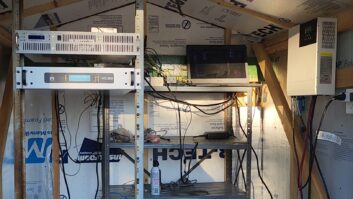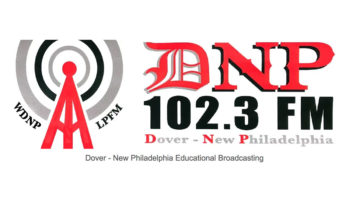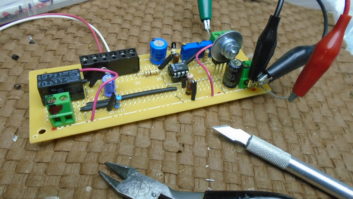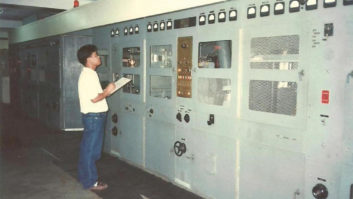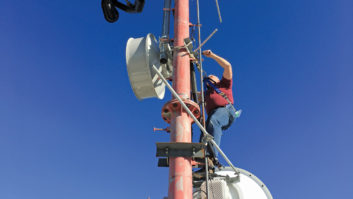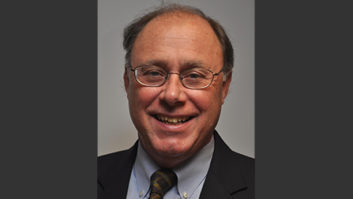An AM Owner in Connecticut Says It’s Time to Explore LPAM and LW Options
I read Naina Chernoff’s article “Pirate Radio Still Afloat” (July 17). It is apparent neither proponents nor opponents of alleged illegal unlicensed broadcasting don’t have tangible solutions for solving the problem. With a finite number of frequencies available on AM and FM, it is not likely to get better in the years ahead.
Those in the broadcast establishment fail to understand fully what this is about. While a few select pirates simply like to rebel against authority under any circumstance, this issue is more about free speech and returning a local voice to our communities than a criminal issue.
Let’s face it. We’d still be a British colony today if we had not created a civil disobedience over the right to govern ourselves free from British tyranny. People who broadcast with alleged illegal stations are doing this out of frustration because the system will not allow them to gain their own broadcast station.
Angry and frustrated
Part 15 rules on FM offer miniscule power levels that render this service useless for any real substantive community service. Part 15 AM broadcasting does offer a better solution for achieving some means of an audience, but that will depend entirely upon the ground conductivity of a given location and how high up you can locate your antenna above the roof or surrounding structures.
If you are lucky and happen to be in a good spot, you can cover a small city or town with Part 15 AM, but for most it will be just a neighborhood or two.
These people are frustrated and angry at a system that has literally legislated genuine low-power community broadcasting out of existence and put full-power broadcasting out of reach for all but a handful of wealthy private citizens or major corporations. Desperate people do desperate things when the system no longer works or represents them and their social and political beliefs.
I have consulted with several broadcast engineers on this subject in recent months, and we’ve come to a conclusion that it is going to be impossible to implement any kind of new low-power broadcasting service on the existing FM band or most of the AM band.
The possible exception may be the expanded AM band due to the limited number of stations slated to take to the air there in the next few years. Of the 85 or so approved to broadcast in the expanded band, about 50 to 60 seem to indicate they will move to the expanded band. It may be possible to add a new low-power service to the expanded AM band in many areas of the country as long as it would not interfere with existing TIS or expanded-band stations and those stations confirmed to move to the new frequencies.
I believe I have a better solution to this mess, one that has been overlooked by both sides.
To-do list
First: The FCC should open up AM 1710 to unlicensed LPAM broadcasting. Change the Part 15 rules to allow a 1- or 2-watt service with a 10- to 20-foot antenna and simple ground system.
This still won’t provide a signal strong enough to interfere with local AM broadcasters, yet should provide enough signal strength to cover a mile- to two-mile radius with a listenable signal even in areas with poor ground conductivity such as hilly and mountainous New England. Currently only one TIS has ever been licensed to use 1710; yet to this day no one seems to know if it ever went on the air. This frequency is literally unused, yet the FCC refuses to allow it to be used for something constructive such as LPAM broadcasting.
Second: Allow some form of licensed LPAM in the expanded band.
Again, not every metro area will be able to support a station. New York City is filled with TIS and a licensed station at 1660 that essentially renders the expanded band useless for such broadcasting. But most areas of the country could benefit and see another station or two added to the AM dial without causing any additional interference problems. Rural areas would have little trouble getting a station and would only have to contend with nighttime skip.
Third: Long Wave, or LW. Popular in Europe and Asia but relatively unknown and unused here, this would seem to offer the most potential for large-scale development.
The FCC is clearing out a large part of the LW spectrum that is inhabited by weather beacons and airport stations. According to my engineering sources, the FCC has no plans to use these frequencies on LW in the near future. This would clearly indicate a large number of frequencies will be clean and free from any interference from existing stations.
Long Wave does not have the same kind of skip that is found on the AM band, thus allowing more stations to coexist on the same frequency without causing as much interference to a nearby station. Some skip does exist, but it is far less active than the standard AM broadcast band.
Both licensed and unlicensed stations should be allowed in the LW band. Unlicensed stations should be able to run sufficient power along with a 20- to 50-foot antenna to cover a 5-mile radius allowing for signal saturation of a small city or rural community. Probably something in the range of 10 to 25 W with a short antenna could cover that radius. Licensed LW could run at higher power levels in order to create local service on par with that of a 250-watt to 1 kW standard AM broadcast station.
Critics will point out that people won’t listen to LW because people would have to buy new radios. Well, people did the same thing when FM came along and then TV. Now it is HDTV and eventually IBOC AM and FM. New radios will be needed for each service, and given that many inexpensive LW and multiband radios are available abroad and a few in this country, it will be easy to put these LW radios into the hands of potential listeners. I borrowed a page from Henry Ford’s own blueprint for business when I came up with this concept.
Call for action
Both commercial and noncommercial broadcasting should be allowed in each new service. By depriving small, independent enterprises an opportunity to advertise their services and products on radio like the Wal-Marts of the world, we create a hostile environment in which to foster entrepreneurial business ideas and allow big businesses to get bigger while cutting the throat of our corner markets, shoe stores, delis, record stores, etc.
Our local stores cannot afford to pay $50 a spot on the smallest AM station, but certainly could afford to spend $1 to $10 a spot on the local low-power station.
Neither side wants to give an inch on this issue, and neither side has offered any logical solutions to the problem. From a technical standpoint, I believe the proposed ideas for new services I’ve outlined are logical and technically feasible.
Let’s give these some serious thought and put an end to the elitist system that dominates broadcasting. It is time for the broadcast establishment to create a logical and reasonable low-power broadcast service that won’t leave out 90 percent of those who want in, and it is up to the alleged pirate operators to start working together to achieve some kind of meaningful dialogue with the FCC and NAB and come up with a solution to the problem. I believe I’ve given you a good start.






